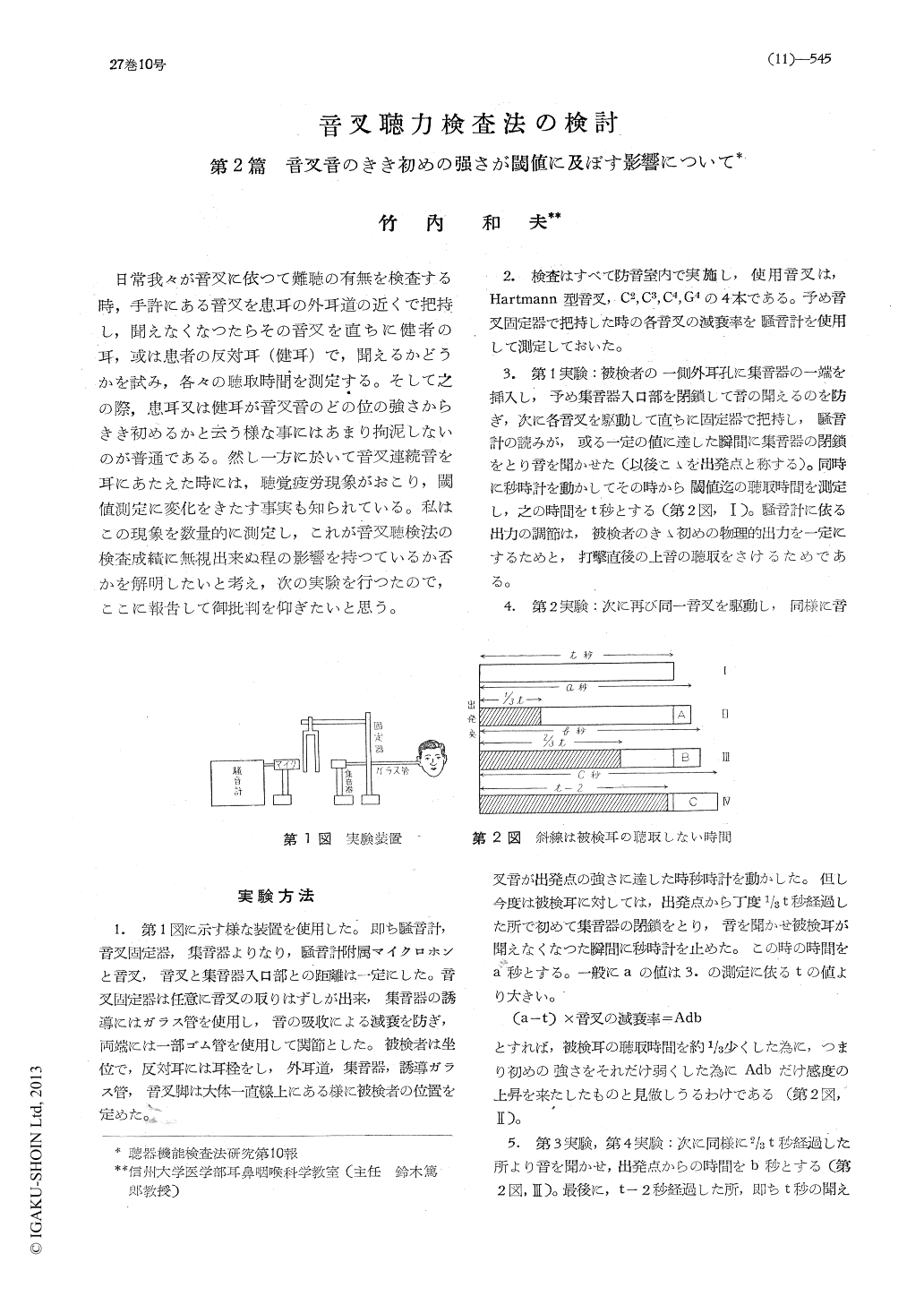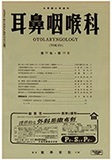- 有料閲覧
- 文献概要
- 1ページ目
日常我々が音叉に依つて難聴の有無を検査する時,手許にある音叉を患耳の外耳道の近くで把持し,聞えなくなつたらその音叉を直ちに健者の耳,或は患者の反対耳(健耳)で,聞えるかどうかを試み,各々の聴取時間を測定する。そして之の際,患耳又は健耳が音叉音のどの位の強さからきき初めるかと云う様な事にはあまり拘泥しないのが普通である。然し一方に於いて音叉連続音を耳にあたえた時には,聴覚疲労現象がおこり,閾値測定に変化をきたす事実も知られている。私はこの現象を数量的に測定し,これが音叉聴検法の検査成績に無視出来ぬ程の影響を持つているか否かを解明したいと考え,次の実験を行つたので,ここに報告して御批判を仰ぎたいと思う。
Takeuchi attempts to find to what effect the initial intensity of which the tone of a tuning fork is endowed with upon striking, might have as an influence over the measurement of threshold hearing, quantitative measurements are made on tones produced with Hartmann's forks C2, C3, C4 and G4 by means of making use of stabilizing fork-holder, tone concentrator and phonmeter. It is found that, by C2 fork, there would be a difference of 11 db. in the results of threshold hearing when it is taken by starting at the average intensity of 50 db. as when the start be at lower level of intensity closer to that of threshold hearing. Which are also true in tests with other forks. Therefore, the author maintains that when tuning forks are used for tests calling for precision the above facts should be taken in to consideration.

Copyright © 1955, Igaku-Shoin Ltd. All rights reserved.


